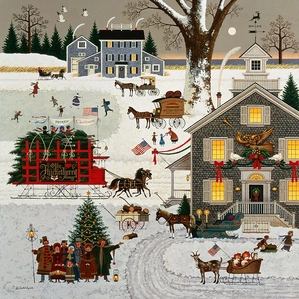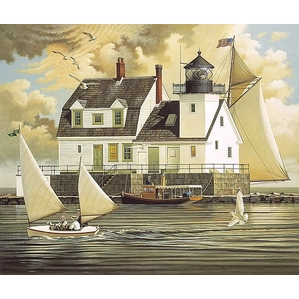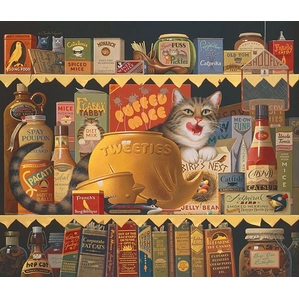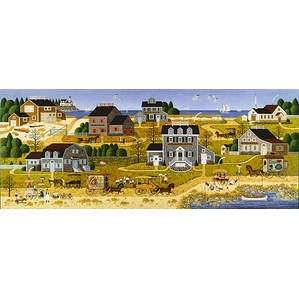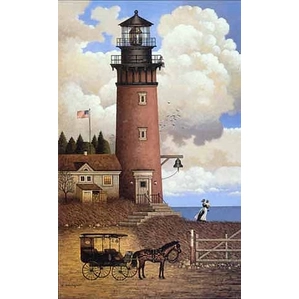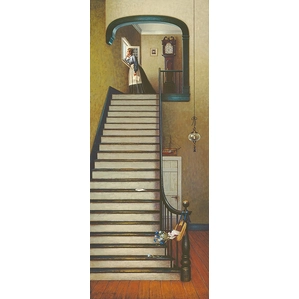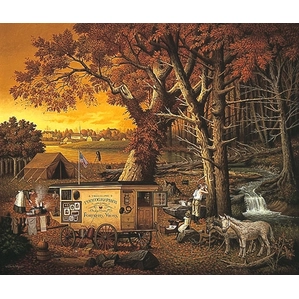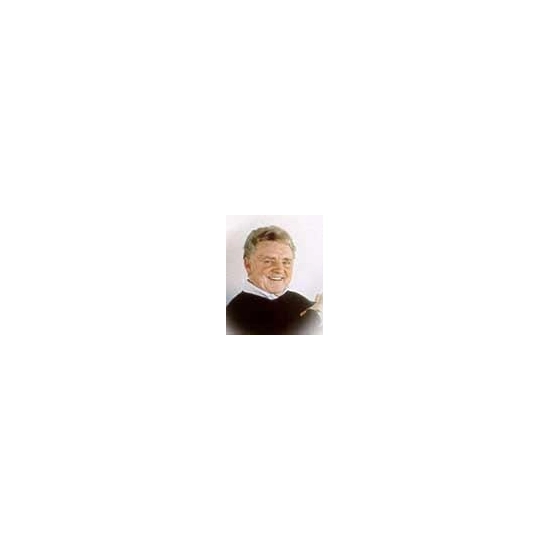
Charles Wysocki
Represented by The Collection Shop Updated on Tuesday, April 15, 2025
The art of Charles Wysocki is a celebration of the historical richness of the American past, taking its inspiration from the pastoral moods of the small towns of New England and rural Pennsylvania. As he said of his work, "I hope my paintings revive pleasant thoughts of order and security, much needed in this fast-paced world." Born in 1928 in Detroit, Charles Wysocki began drawing and painting at a very young age. His father, Charles Sr., a Polish immigrant who worked on the assembly line at Ford Motor Co. for over 35 years, was not thrilled about his son s artist aspirations. Most of the encouragement came from his mother, Mary. Charles attended Cass Technical High School and focused on its art program. For a time, he worked as an apprentice in Detroit art studios.
After leaving the Army, Charles attended Art Center in Los Angeles (now Art Center College of Design in Pasadena) on the G.I. Bill. After completing his studies, and majoring in design and advertising illustration, Charles joined the staff of freelance artists at McNamera Brothers in Detroit in 1955. Missing the West Coast, Charles moved back to Los Angeles in 1959 to form an advertising agency with three other artists called "Group West" doing freelance commercial artwork. Clients included General Tire, Unocal, Carnation, Chrysler, United California Bank, Otis Elevator Company and Dow Chemical Co. During this time he won numerous awards for his illustrative talents.
Charles met his future wife, Elizabeth, a recent graduate of UCLA with a degree in art, at an ad agency in Los Angeles. Elizabeth s family was one of the first to settle in the San Fernando Valley. Charles was enamored by the simplicity of this farm life and wholesome values; this was a major turning point and the influence that started his primitive style. In 1960, the Wysockis made their first trip to New England and fell in love with the Northeast which was to become his primary source of inspiration.
During his free time in the early 1960s, he worked on his Americana/primitive paintings. After a one-man show at which he sold every painting in this style, he decided to leave commercial art for good and focus on his Americana art. He also published greeting cards through Duncan Macintosh and posters through The Bernard Picture Company. During this time, the Wysocki s had three children and moved from Los Angeles to Lake Arrowhead, CA.
Wysocki s appreciation of America started early. "I love this country so much, "he said. "I spent my childhood on the west side of Detroit, in the Polish enclave. In our neighborhood, people still talked about the oppression they had suffered in the Old World. The freedom in America amazed them." Wysocki s work was infused with this freedom and, through the joys and heartaches of his images, he shared the better life his family had found.
"In my paintings, I want to hit every emotion I can – from the sublime to the silly," Charles Wysocki said. He was remarkably successful in his endeavors, as a legion of fans and art collectors can attest. The love of life, with all its wit and wisdom, poetry and emotion, sights and sensations, is captured in his work. "There is a simple message in my work," Wysocki said, "and it is love."
In 1972, Wysocki started his relationship with AMCAL. Together they produced the first Americana Calendar, which has been published annually ever since. In 1979, Charles published his first limited edition print, Fox Run, with The Greenwich Workshop, Inc., with whom he published more than 70 limited edition prints, two books and the collectible, Americana Bowl between 1979-1993. His first two books, An American Celebration (1985) and Heartland (1993).were created by The Greenwich Workshop and published by Workman Publishing. His two small gift books Blessings by the Sea, and My Purrfect Friend, were later published by Harvest House. Wysocki made personal appearances at galleries all over the United States. He was published by Hadley House for some years until he self-published under the management of his son, Matthew.
He won many awards for his work including the one he was most proud of, the medal of honor from the National Society Daughters of the American Revolution, the society s highest national honor. He also appeared in People magazine July 7, 1986 and was invited to the White House Independence Day celebration in 1981 for which he did a painting.
Charles painted until his death on July 29, 2002 at the age of 73. It was his 42nd wedding anniversary. He is missed by his many fans, but the pleasure and joy his artwork inspires lives on. He is survived by his wife, Elizabeth, his three children, David, Millie, Matt and his two grandchildren Emily and Jackson.
THE COLLECTION
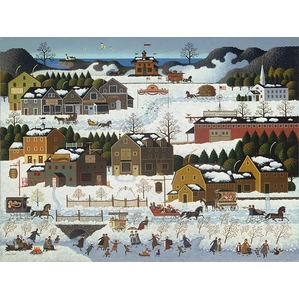
Charles Wysocki Hickoryhaven Canal MASTERWORK ANNIVERSARY EDITION Giclee On Canvas
Price: $1,250.00
HHCMW

